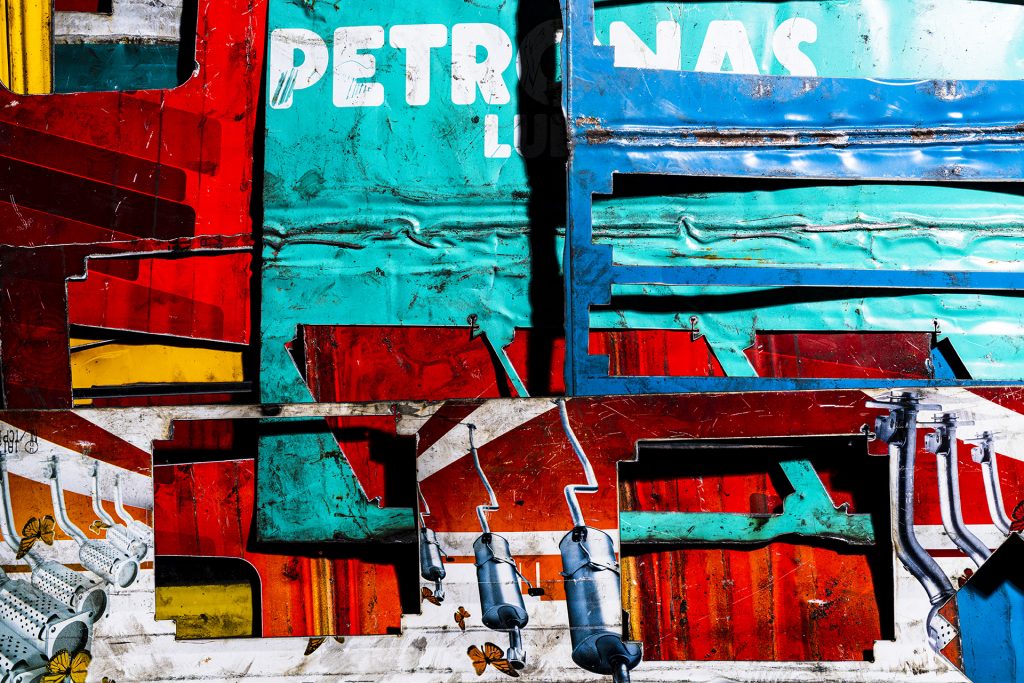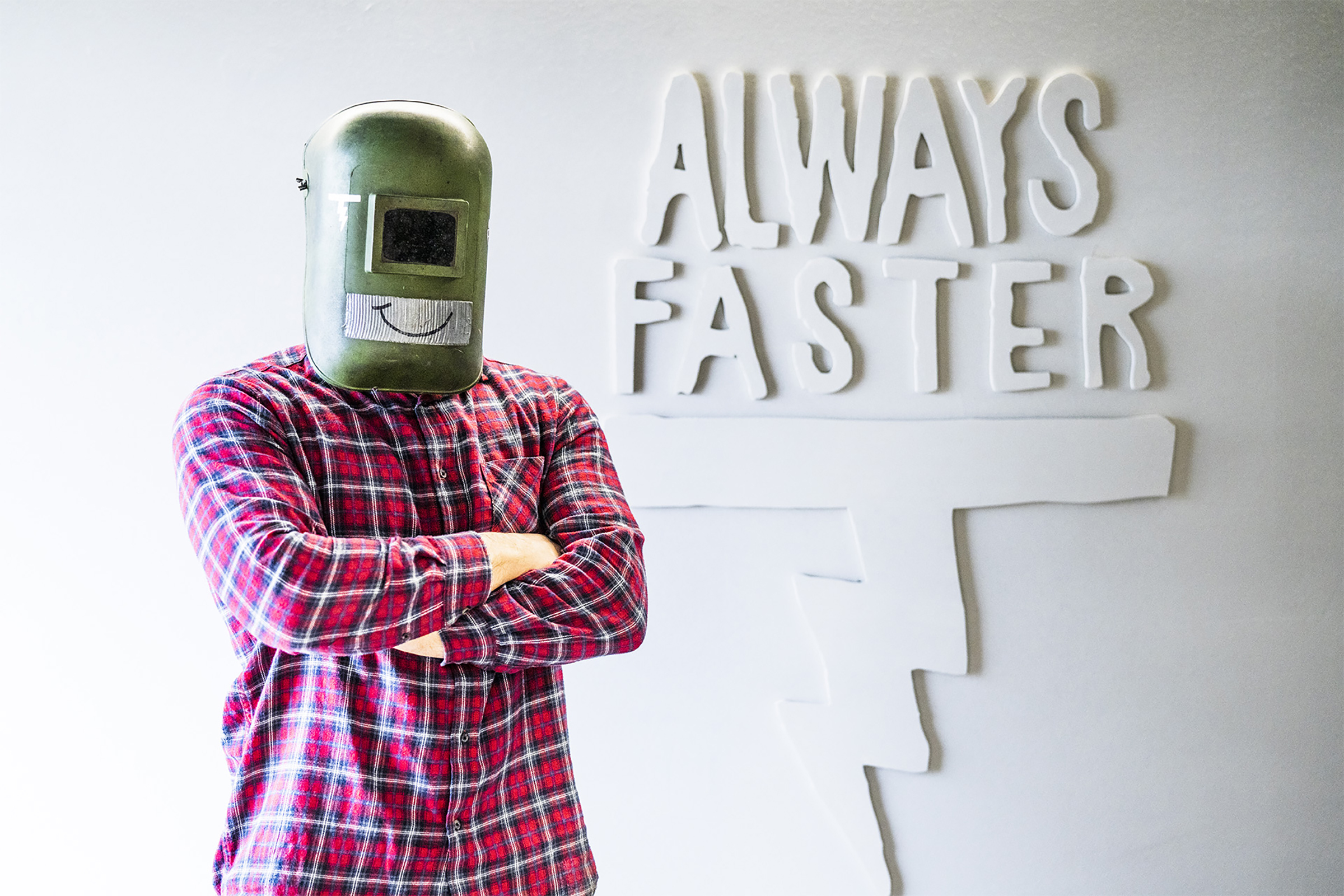Let’s be honest: anyone who has ever undertaken the research or even the DIY construction of furnishings made through the creative reuse of waste materials will surely have wondered about the aesthetic and functional quality of the object obtained. However, sifting through the market of recycling applied to design, we came across an entrepreneurial reality that leaves no room for doubts about the value of the products in the catalog. This is the case of Vibrazioni Art Design (VAD), a virtuous industrial reality that practices upcycling between art and design.
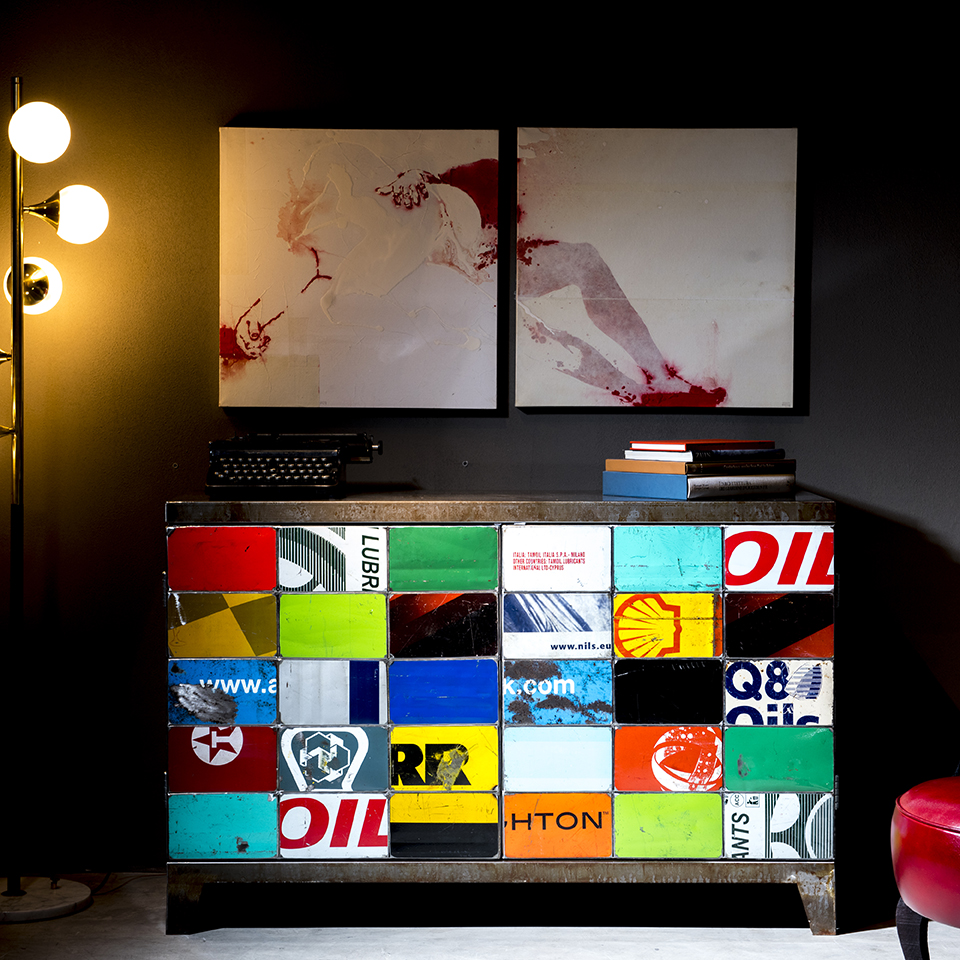
The DNA of Vibrazioni Art Design
Vibrazioni Art Design is a company from Romagna (Italy) dedicated to the customization of motorcycles and the production of recovered metal furniture. A sort of workshop laboratory that opposes industrial logic favors the craftsmanship of barrels coming from the petrochemical and food industry.
Infusing poetry into the cold sheet metal of garishly colored fuel drums, in fact, requires not only the accurate calculation of formal balances and functional performance. The recovery of the drum itself is only the first of a series of activities resulting from complex reflections.
Nevertheless, precisely because they were motivated by the desire to bring out the past of a discarded material, the VAD team formulated the lifestyle paradigm of a pop audience with bins. Are you wondering what the secret is? “Impactful color combinations and surface variations charged with memory” could be the immediate answer. But in talking with one of the founding partners, we discovered there is so much more.
First of all, what was the path of this daring experimental adventure?
As in the most ordinary narratives set in the Italian rural context, the VAD experience begins in 2006 in Massa Lombarda; a small village in the most genuine countryside of Romagna. Always fascinated by the sparks of fire from the blacksmith’s shop next door, Alberto Dassasso began to combine a passion for vintage objects and a weakness for engines inherited from his land in the former family barn.
Not surprisingly, “among fruit trees and rust” is the image with which he loves to associate the reality he shares with a motivated team of faithful collaborators.
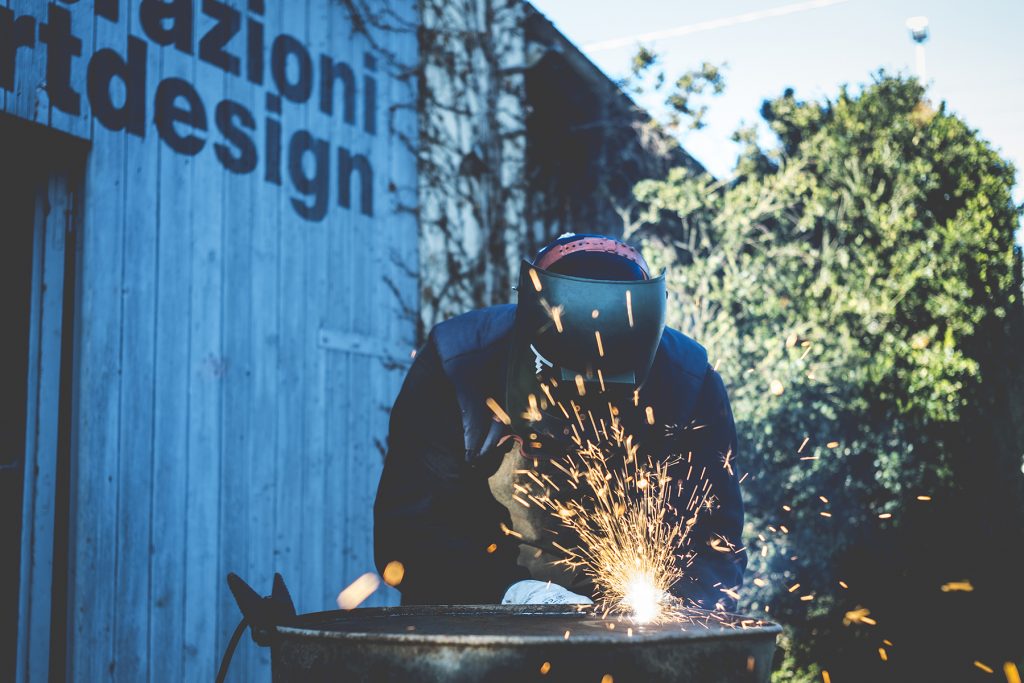
But in addition to the relaxed atmosphere of the countryside and the luminescence of welding, the decisive language of Andy Warhol’s Pop Art is the ingredient that has continued to motivate the origins of this production adventure.
Thus, starting from the causal discovery of the material potential of the bin, their creations first succeed in being presented at the Salone Satellite in Milan. Shortly after, they are also applauded at the rally for the 110th anniversary of Harley Davidson and then immortalized in a television report of the program Le Iene.
From there, the technical skills of these “design-makers with helmets” have been honed to the point where they have been able to collaborate with Ducati and Pirelli (2015); and even showcase their pieces in music videos and film sets. See Immaturi la serie (2018).
But how do they return value to the recovered sheet metal?
With their rough verve and post-modernist imprint, which they describe as “eco-romantic,” VAD products are sartorial pieces that stand out precisely because of the scars stamped on what were once industrial containers.
Indeed, an armor characterized by multiple variations can evoke memories of experiences and other contexts that increase the emotional impact of the object and its duration of use.
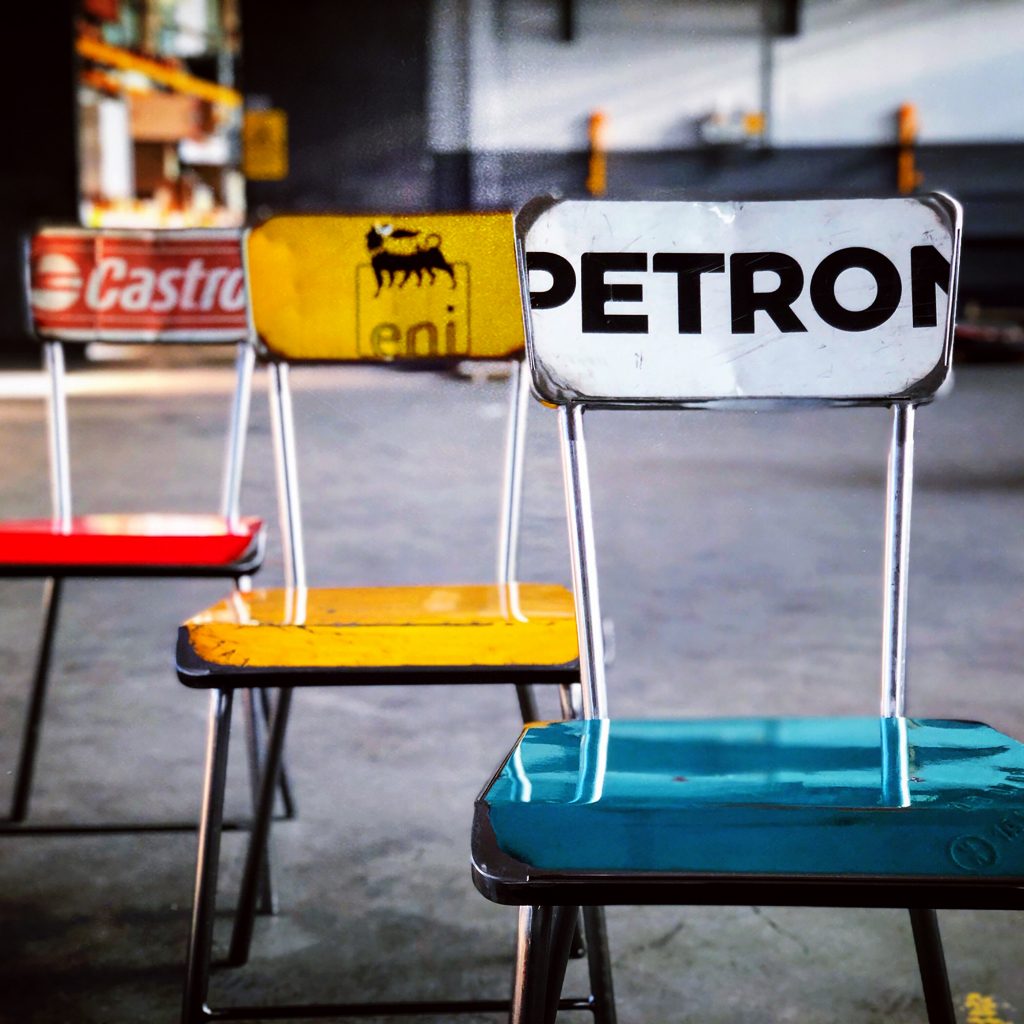
Imbued with symbolic values, what could be banal furnishing accessories manage, therefore, to become bearers of a vision of long-term sustainability, thanks to a “skin” that evokes the entire life of the material.
Thus, nothing is hidden or camouflaged, the skeleton becomes aesthetics and the style derives from the imperfections themselves. The volumes are studied in such a way as to emphasize the self-supporting nature of the sheet metal; which, if properly folded, does not require internal support structures. Everything they do is devoted, therefore, to the complete distortion of the original bin. Only the material rendering and the still visible marks are in charge of reaching the belly of those who buy them, stimulating their ethical conscience.
And what’s the formula for connecting furniture, bikes and sustainability?
Aware that only by experimenting is it possible to push the bar higher and higher, Alberto Dassasso confirmed that their true strength lies in«applying coherent poetics in different areas».
In this way, tables, chairs, sofas, and cabinets are the protagonists of that sort of “dramaturgy of recovery” staged in the VAD catalog. Although inanimate, in fact, these furnishings tell the story of the redemption of waste materials. A sort of manifesto of a new art of recycling!
Similarly, the motorcycles that enter the Ravenna workshop are covered with custom-made metal clothes that bring endangered vehicles back to life.
As a result, among the captivating shots taken by Callo Albanese, the juxtaposition of interior furnishings and street motorcycles does not seem at all jarring. This is because the thought from which such a concrete upcycling activity originated is as coherent as its incisive representation is calibrated.
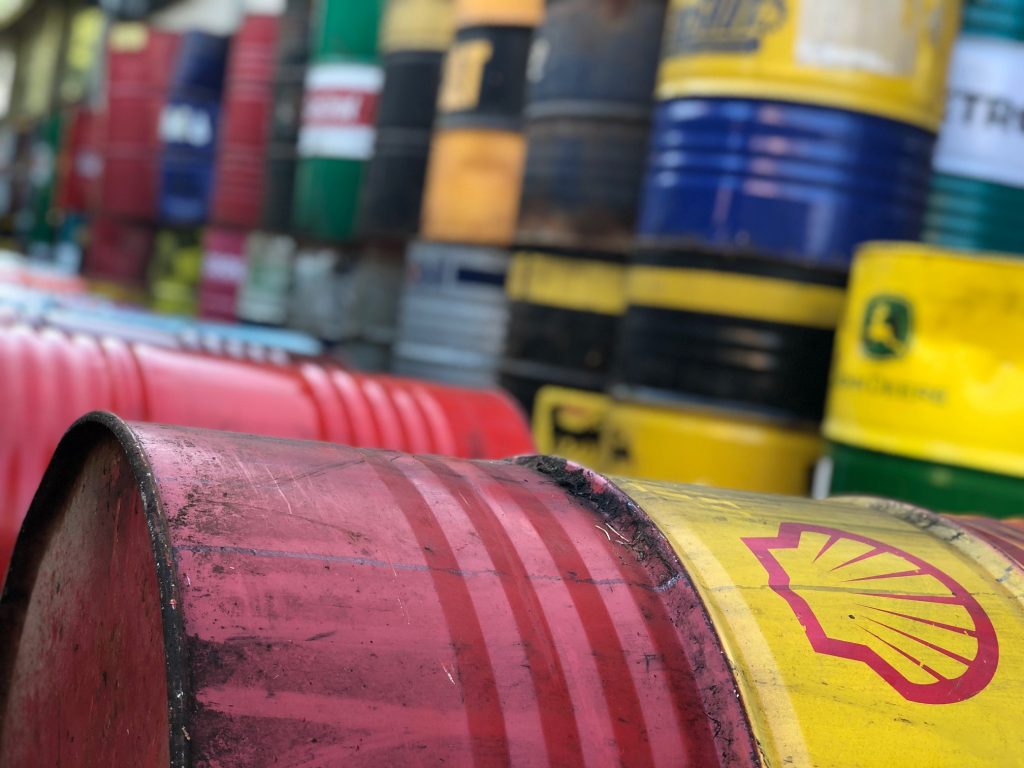
But specifically, what does VAD upcycling consist of?
The upcycling process implemented by VAD mainly involves old fuel and oil drums. Otherwise destined for waste and disposal, these are recovered, reinterpreted, and adapted to new life functions.
There are many companies that, during transport or storage, use these iron drums on a daily basis to contain the most diverse raw materials. And once the contents have been removed, these unfortunate packages constitute a serious ecological problem.
In the panorama of companies engaged in the regeneration of industrial drums, VAD has identified partners qualified in the disposal of exhausted oils. Specifically, the drums are washed with rainwater and ash lye. This allows the disposal of contaminated liquids and potentially harmful substances contained in them. In this way, they entirely dispose of the residues as well as the vapors developed during washing, ensuring a 99.9% healthy product.
Therefore, the empty drums, selected on the basis of graphics, logos, and colors of interest, are subjected to a process of reclamation and ecological recovery that actually reintroduces them into the production cycle, reducing waste and generating additional value.
And lastly, how do you go from bins to design?
Cutting, folding, welding, and varnishing are then carried out on the material. In this way, only the patina of the time that has passed and the materiality of the workmanship remain on the furnishings.
This is why we told you about a unique craftsmanship process. It takes an open mind to change, a keen sense of detail, and a lot of determination to make sustainable design a reason to live!
